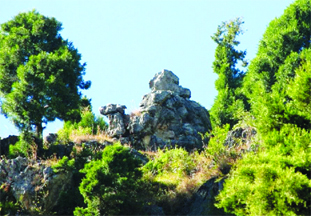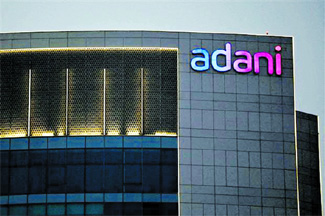
Mussoorie is one of the most popular hill stations located at a distance of 290 km from Delhi in the Dehradun district of Uttarakhand. With a backdrop of the Shivalik range of Himalayas and doon valley, Mussoorie, also known as Queen of The Hills, stands at an altitude of 7000 feet above sea level. With a cool and pleasant climate throughout the year, Mussoorie was once the British summer capital.
The British remnants can be seen in the city in the archaic architecture of the hotels and churches. One of the most popular tourist attractions in Mussoorie is The Mall (also known as the Mall Road), which is a slightly steep boulevard with eateries and other shops lining its entire stretch. From the little houses spread around the area to the architecture of even the lamp posts, The Mall gives off a distinct colonial vibe.
PLACES TO VISIT
Amongst the places to visit in Mussoorie, Kempty Falls easily tops the list. Perched at an altitude of 1880 in the Garhwal Himalayas, ‘Queen of the Hills’, Mussoorie is an ideal holiday destination. Established by the British in 1823, the vibe of that era continues to linger in its churches, libraries, hotels, and summer palaces. Take in panoramic views of the city atop Lal Tibba, relive the days of the British Raj at Gun Hill or walk around the pleasant four-kilometre long promenade of Camel’s Back Road. Birdwatchers and photographers can head to the Benog Wildlife Sanctuary, and the Mall Road of course, is great for an evening stroll.
CAMEL’S BACK ROAD
Camel’s Back Road is a four-kilometre-long stretch, named after a natural cluster of rocks that are shaped like a camel’s hump. This road connects two prominent locations, starting at Library Point and leading up to Kulri Bazaar. The slope adjacent to the road contains a colonial cemetery that dates back to the mid-19th century. With its beautiful views of the surrounding hills at sunset and sunrise, it is ideal for early morning and late evening walks. Horse rides and rickshaw rides are also available. Surrounded by rocky mountains and green woods, its perfect for a tranquil break from the hustle-bustle of Mussoorie’s Mall Road.
BENOG WILDLIFE SANCTUARY
Benog Wildlife Sanctuary is surrounded by pine trees and snow-capped mountain peaks. It serves as the natural habitat for rare species of birds including mountain quails and red-billed blue magpie, as well as wildlife like the Himalayan goat, the Himalayan bear, panthers, deer, and leopards. Thickly forested with pine and fir trees, the area is also rich in medicinal plants. Take in stunning views of the surrounding peaks, and sit beside the Aglar River which flows down from Mussoorie into the sanctuary. This is an ideal jaunt for nature lovers and bird watchers.
SHEDUP CHOEPELLING TEMPLE
Also known as the Tibetan Buddhist temple, this was set up by the Tibetan population in Mussoorie and is located on the Happy Valley road close to the IAS Academy. The Dalai Lama took refuge in Mussoorie after he escaped from Tibet, before the Tibetan community was granted refuge in Dharamshala. The temple has a serene vibe and is especially suitable for those seeking a bit of tranquillity amidst the madness. Housing many Tibetan literature and books, the temple is adorned with clay lamps and colourful prayer flags.
THE MALL
Take a leisurely stroll along the Mall Road, which is the heart of Mussoorie. Although it’s jam packed with throngs of tourists on foot and in vehicles, this is an exhilarating experience which will give you a chance to get in a spot of shopping too. The two-kilometre-long stretch begins from Library Point and goes all the way up to Picture Palace, although you won’t find it as long owing to the variety of stalls selling bric-a-brac, snacks and other knick-knacks along the way. We suggest munching on a hot fire-roasted ‘bhutta’ (corn on the cob), which is absolutely essential to make the experience complete. Look out for stores selling woollens and shawls.
GUN HILL
This is the second highest point in Mussoorie, and is located about 400 feet above the Mall. You can access it by ropeway or take the half-hour-long trek from the court complex on the Mall road. Once you’re up, use one of the telescopes on the edge to get sweeping views of the mountain peaks from a close range. Back in 1857, the British had placed a large firing gun here during the Sepoy Mutiny, and it is said that subsequently, a canon was fired from Gun Hill every afternoon so that people would know that it was noon and adjust their watches. Although the gun was removed in the 70s, the name has stuck. Today Gun Hill accommodates the water reservoir for Mussoorie.
LAL TIBBA
Lal Tibba literally translates to mean the Red Hill, and refers to the highest point in Mussoorie. All the broadcasting stations of All India Radio and Doordarshan are situated here, and access is restricted since the Indian Military is stationed here as well. You can take in the panoramic views through the lens of an old telescope mounted atop a 20-metre-tall tower at the edge of the cliff. We also suggest you take a horseback ride around the area to really take in the experience in its entirety.
MUSSOORIE LAKE
The Mussoorie Lake is a relatively recent tourist attraction that has been developed by the Dehradun Development Authority. Located about 6 kilometres before Mussoorie on the drive up from Dehradun, it’s a good place to make a pit stop on your way to the hill station. Enjoy boating in one of the paddle boats, grab a quick bite at one of the small restaurants around it, and take in beautiful views of the valley below.
KEMPTY FALLS
These vertical waterfalls are one of the most popular spots for tourists visiting Mussoorie. The water cascades down from a height of 40 feet and crashes against the boulders below before splitting into five streams. Plunging from a mountain placed at about 1,364 metres above sea level, the Kempty Falls are usually crowded with tourists, so the best way to take them by is by picking a picnic spot at a vantage point and observing them from a distance. The more adventurous can also take a dip in its cool water.
MUNICIPAL GARDEN
Initially known as Company Bagh, the Municipal Gardens are an ideal family outing. With sprawling colonial gardens, green lawns, a fountain in the centre, a lake, a nursery with 800 different species of flowers and a wide range of saplings for sale, it is a beautiful attraction for tourists visiting the hill station. Don’t miss the mammoth China tree in the garden, and take a short boat ride on the lake. Located just a couple of kilometres from the Library Point, it’s easy to access and makes for a superb early evening pit-stop.





Be the first to comment